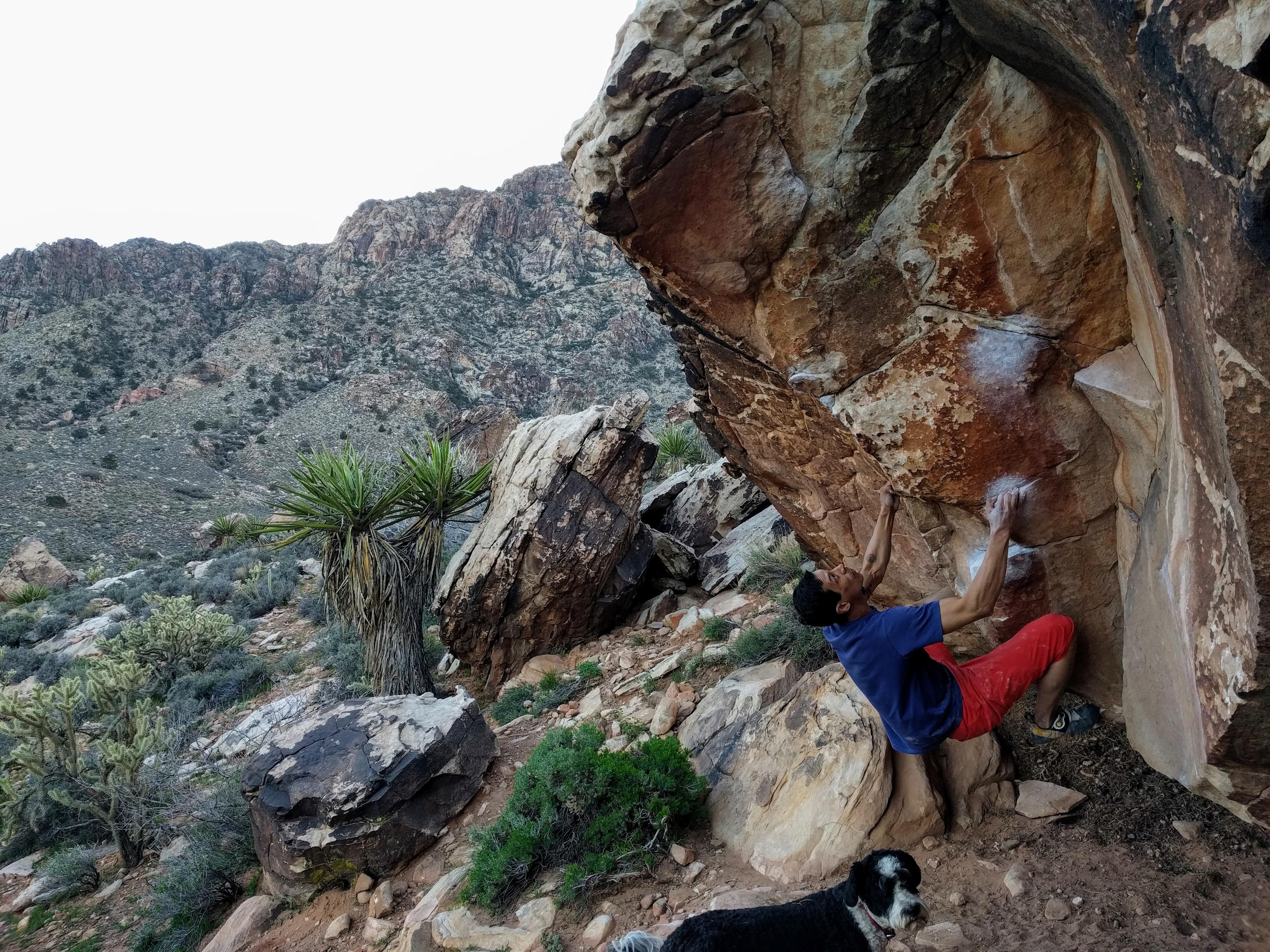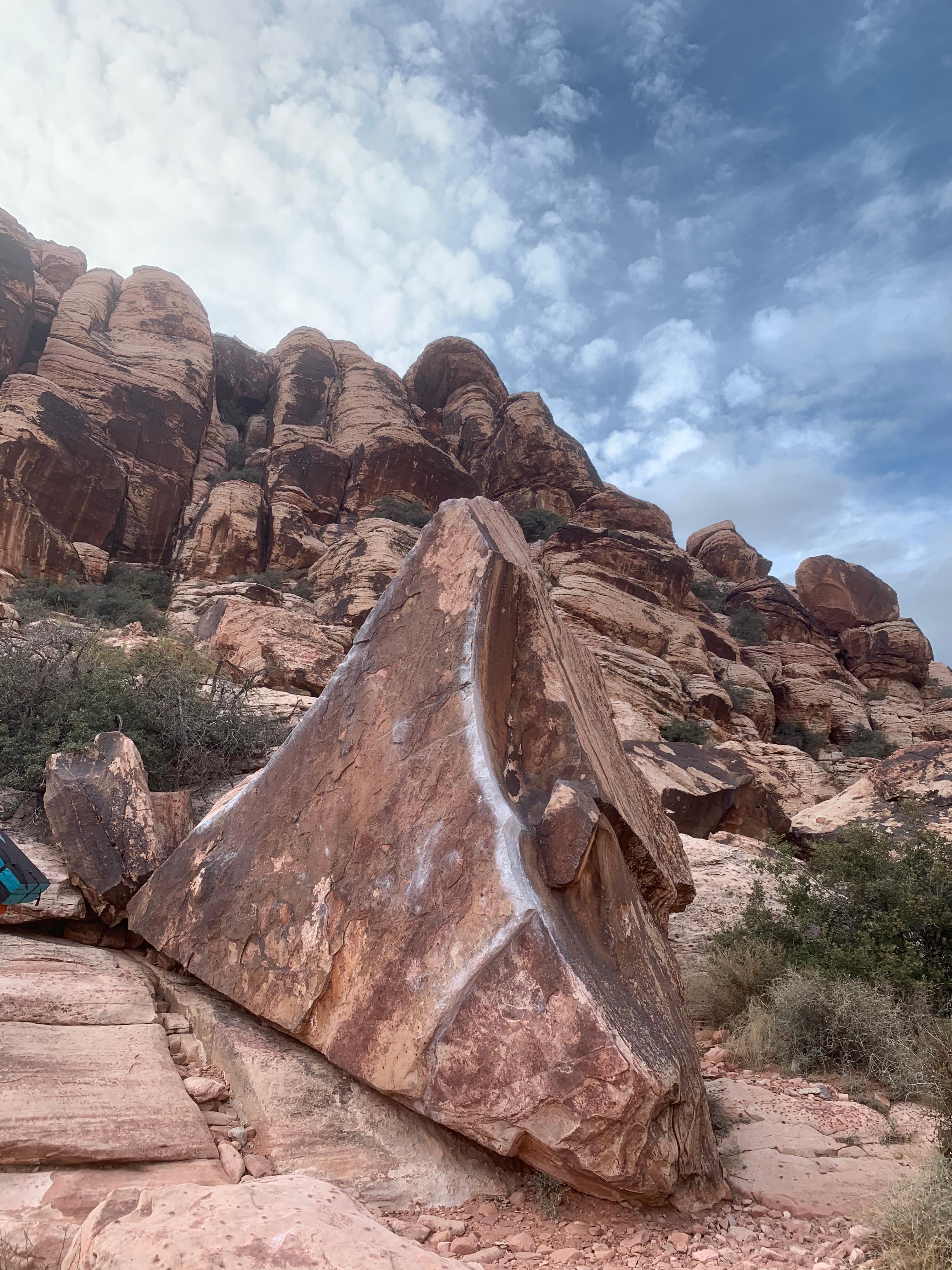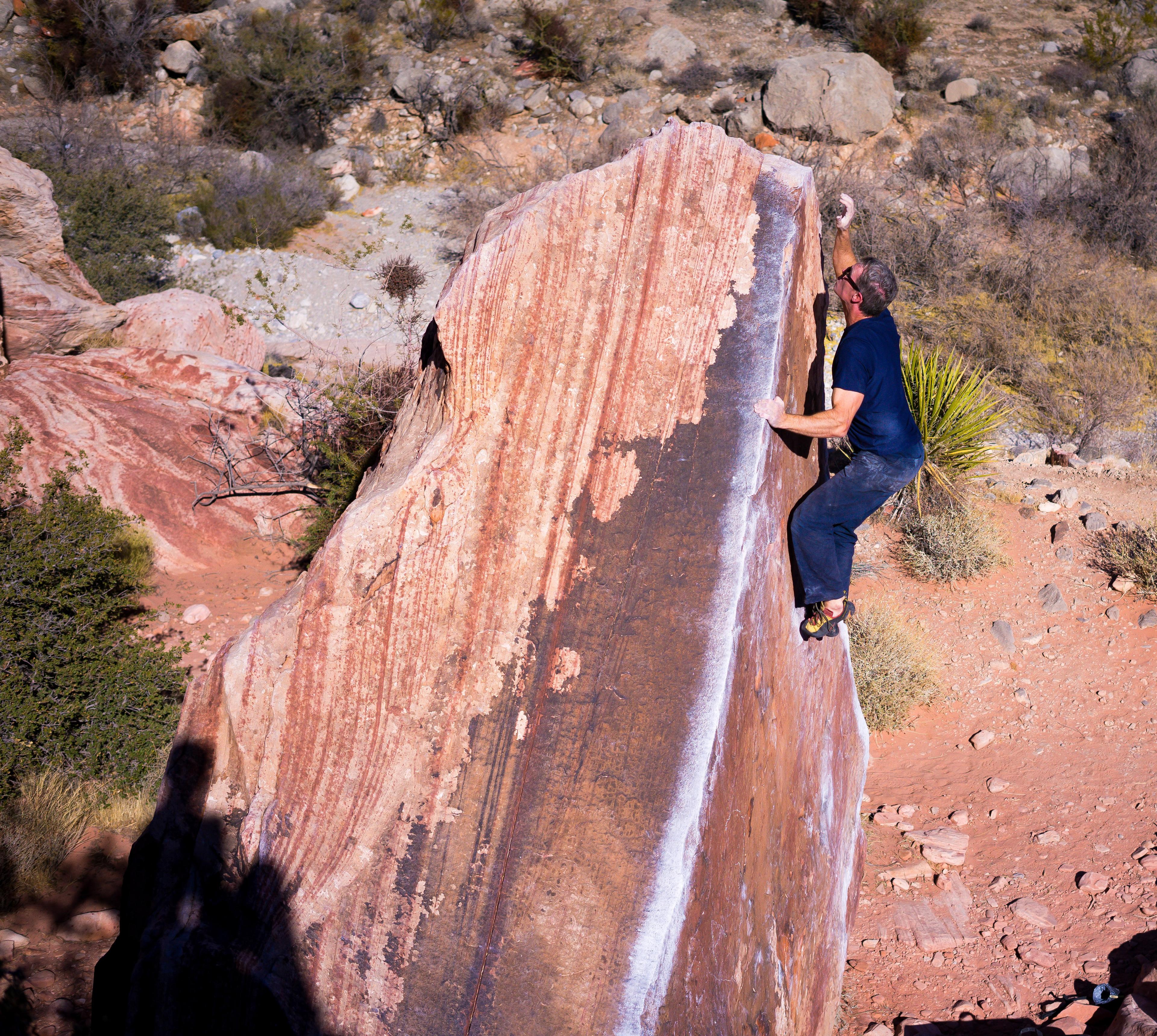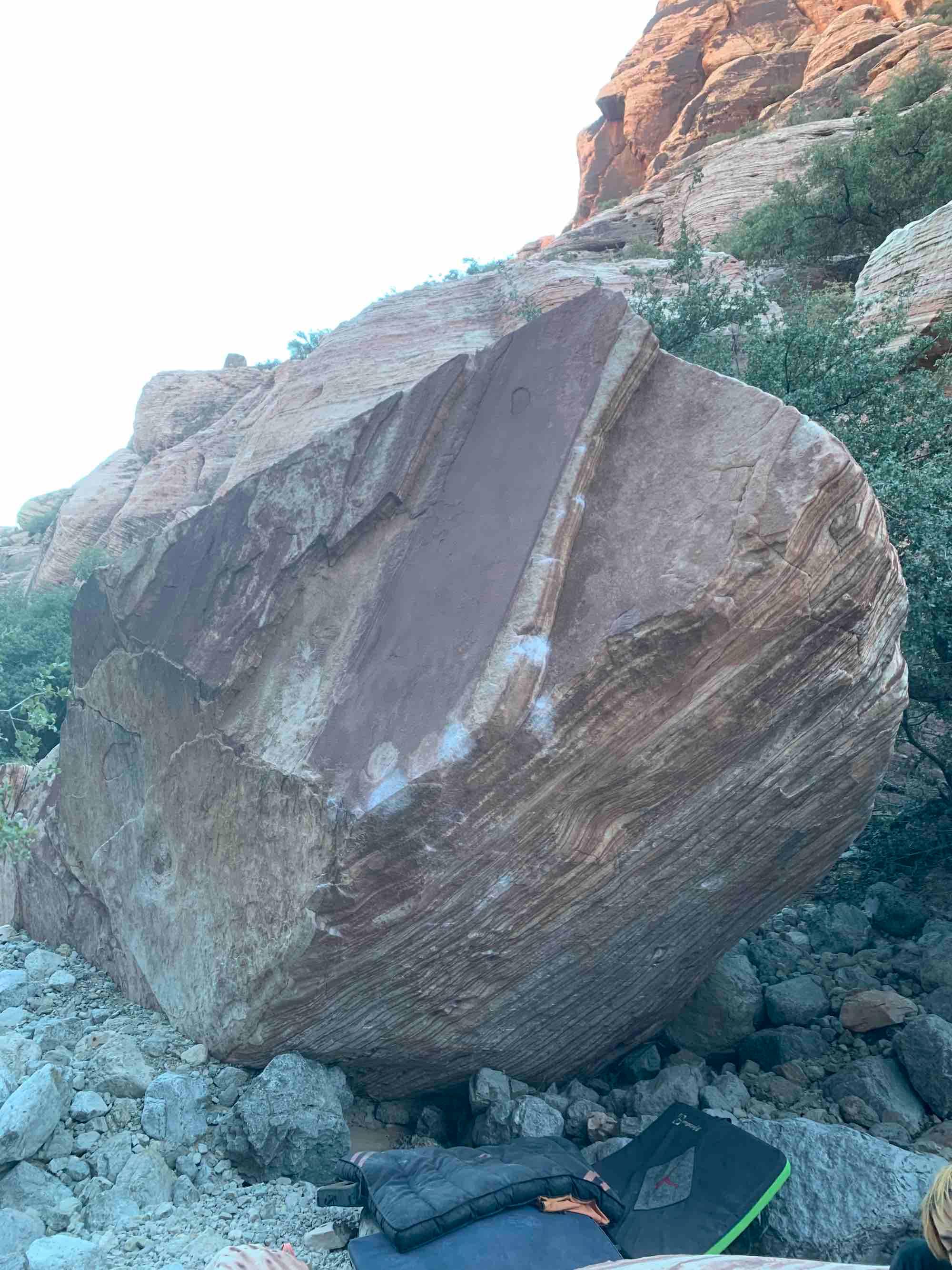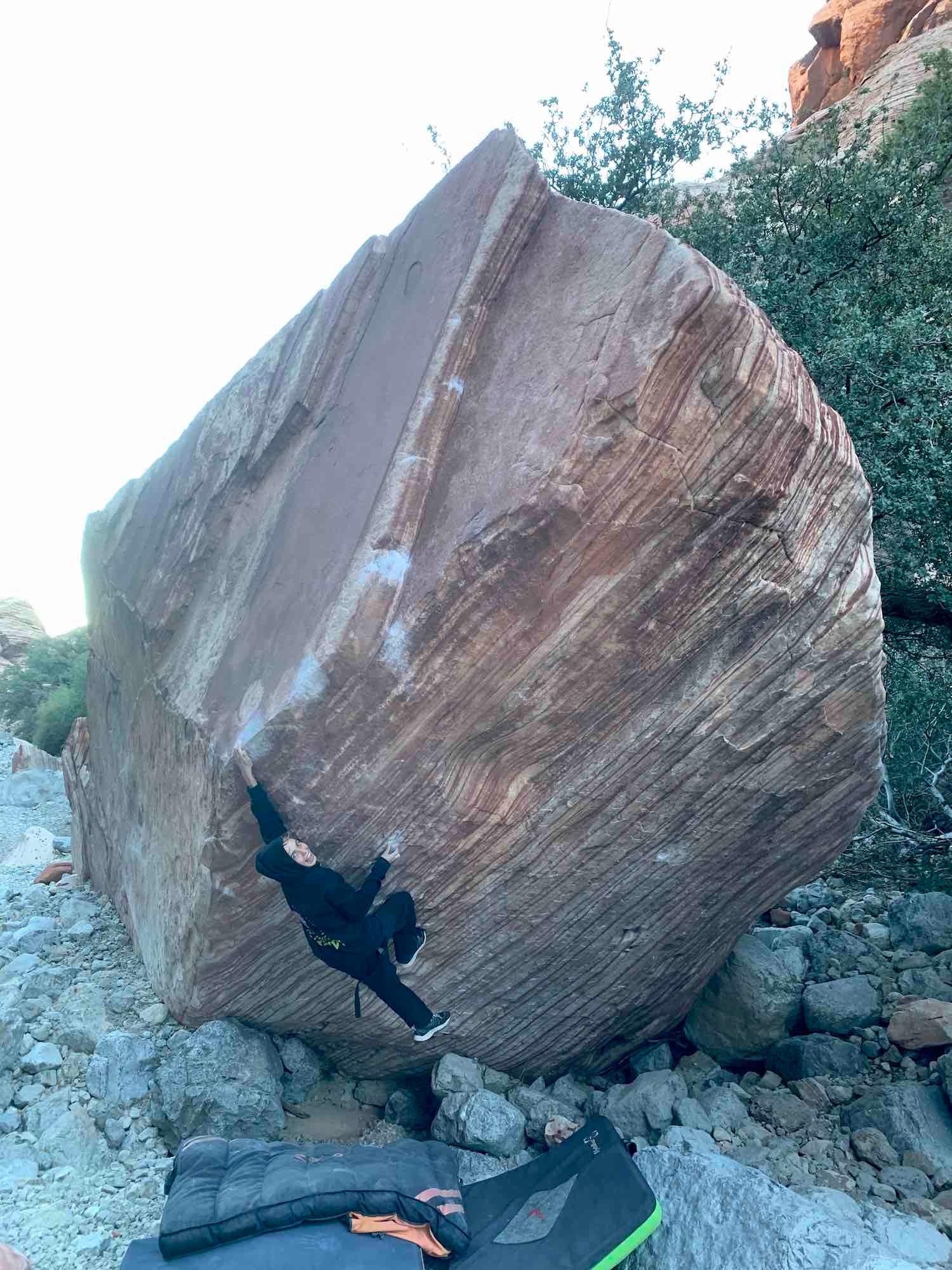Red Rock Bouldering
Description
[Edit]Includes Kraft Mountain areas, areas along the Red Rock Conservation Area loop, and the canyons south of the Conservation Area. Access these areas from Las Vegas by driving down Charleston Boulevard until it turns into Calico Basin, the Conservation area or one of the canyons.
The climbing is primarily sandstone and contains some of the country's hardest boulders.
Red Rock sandstone is particularly soft and fragile after it rains. Do not climb for 24-72 hours after rain. To assess whether or not it is safe to climb dig into the dirt several inches, the sand should be dry and powdery. If it has any moisture the rock is still wet.
It is not fun for anyone when a classic climb breaks!! Leave No Trace and follow parking signage to avoid hefty fines.
Local climbing organizations
[Learn more]Southern Nevada Climbers Coalition
